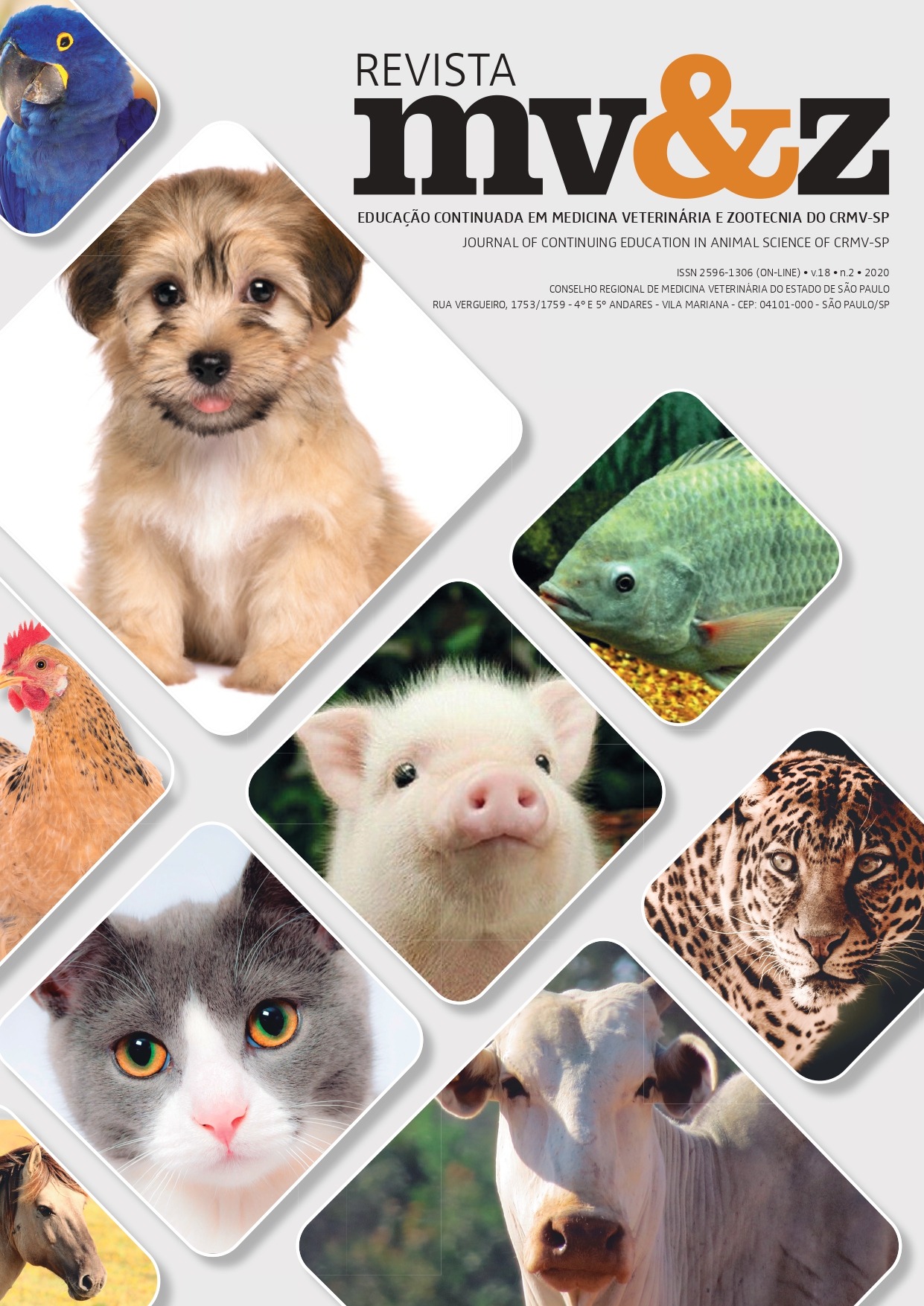Anesthetic protocol for thoracic wall resection followed by reconstruction in dogs: a two-case report
Main Article Content
Abstract
It is reported the anesthetic protocol used for two dogs subjected to thoracic wall resection due to neoplasms at the Roque Quagliato Veterinary Hospital, University Center of Integrated Faculties of Ourinhos, São Paulo. A female Poodle aged 10 years and a male rottweiler aged 1.25 years were anesthetized with isoflurane, local anesthesia of respectively six and seven intercostal spaces using 2% lidocaine and 0.5% bupivacaine, and continuous rate infusion of morphine (0.1 mg/kg/h), lidocaine (50 μg/kg/minute) and midazolam (0.1 mg/kg/h). Postoperatively, both animals received epidural morphine at 0.2 mg/kg and fentanyl at 2 μg/kg in 0.9% NaCl for a total volume of 0.3 mL/kg. A wound soaker catheter was left in place during the subsequent 48 hours for administration of lidocaine and bupivacaine at a total of one toxic dose for each day, divided into five applications. Postoperative prescription comprised tramadol at 4 mg/kg and metamizole at 25 mg/kg every eight hours for seven days, and meloxicam 0.1 mg/kg every 24 hours for three days. Both dogs recovered quietly from anesthesia and no signs of pain were detected during the next seven days. This anesthetic protocol is recommended for thoracic wall resection in dogs.
Article Details
1. Autores mantém os direitos autorais e concedem à revista o direito de primeira publicação, com o trabalho licenciado sob a Creative Commons Atribuição-NãoComercial-SemDerivações 4.0 Internacional
2. Autores têm autorização para assumir contratos adicionais separadamente, para distribuição não-exclusica da versão do trabalho publicada nesta revista (ex.: publicar em repositório institucional ou como capítulo de livro), com reconhecimento de autoria e publicação inicial nesta revista.
3. Autores têm permissão e são estimulados a publicar e distribuir seu trabalho online (ex.: em repositórios instituicionais ou na sua página pessoal) a qualquer ponto antes ou durante o processo editorial, já que isso pode gerar alterações produtivas, bem como aumentar o impacto e a citação do trabalho publicado (Veja O Efeito do Acesso Livre);
